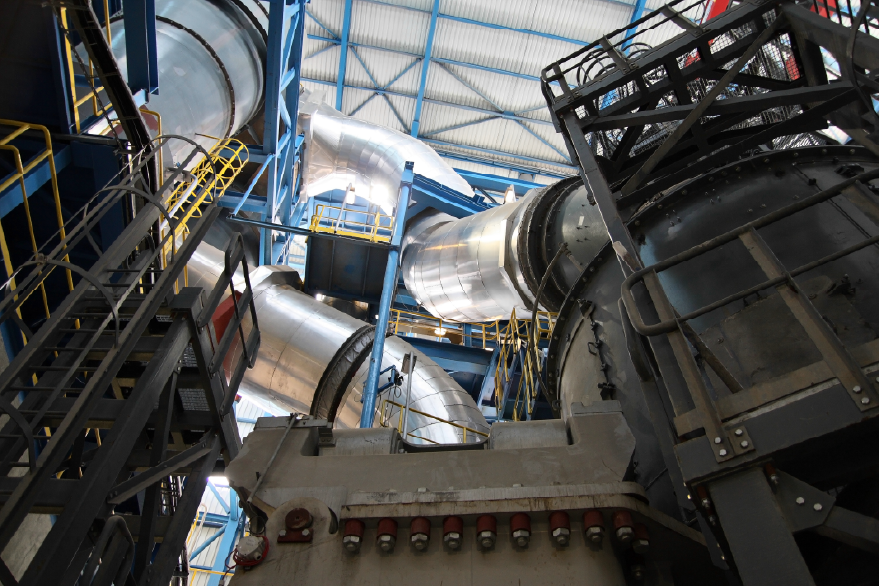Commercial HVAC, What It Is and Why It Matters
How Does a Commercial HVAC System Work, A commercial HVAC system (Heating, Ventilation, and Air Conditioning) is the set of equipment and controls that keeps your building comfortable, healthy, and efficient. In offices, restaurants, warehouses, retail, and industrial spaces, HVAC isn’t just about comfort—it protects products, supports indoor air quality (IAQ), and keeps employees productive.
In practice, a commercial setup combines:
- Heating (usually gas/electric furnaces or heat pumps),
- Cooling (rooftop units—RTUs, split systems, chillers),
- Ventilation (bringing in fresh air, exhausting contaminants),
- Controls (from simple thermostats to DDC/BMS with zoning and scheduling).
From our work across Austin, Round Rock, San Marcos, San Antonio, and the surrounding area, we’ve seen that the right system, properly sized and maintained, pays for itself in fewer breakdowns, lower energy bills, and more consistent temperatures.
The Core Mechanics: Heating, Ventilation, Cooling (and Controls)
Heating. Commercial buildings often use furnaces or heat pumps. Furnaces add heat by burning gas or using electric resistance; heat pumps move heat from outside to inside. In mild Central Texas winters, high-efficiency heat pumps can be very cost-effective.
Cooling. Most small to mid-size buildings rely on RTUs (packaged rooftop units) or split systems; larger facilities may use chillers feeding air handlers (AHUs). Cooling works by absorbing heat at the evaporator coil and rejecting it at the condenser coil.
Ventilation. Fresh-air intake dilutes indoor pollutants and supports IAQ. Economizers can use cool outdoor air to reduce mechanical cooling when conditions allow—great during shoulder seasons.
Controls. Digital Direct Controls (DDC) or a Building Management System (BMS) coordinate equipment, schedules, and setpoints. Add zoning and you can condition only the areas that need it.
In our experience, getting controls and schedules right is one of the fastest ways to cut wasted runtime—especially in offices and retail with predictable occupancy.
Inside the System: AHUs, RTUs, Ductwork, Thermostats & DDC
- AHU (Air Handling Unit): Moves and conditions air; houses filters, coils, fans, and dampers.
- RTU (Rooftop Unit): A packaged system that handles heating/cooling/ventilation on the roof—popular for ease of service.
- Ductwork: Distributes air to zones. Correct sizing, sealing, and insulation are essential to avoid hot/cold spots and energy loss.
- Thermostats & Sensors: Measure temperature (and sometimes humidity/CO₂).
- DDC/BMS: The “brain” that sequences equipment, modulates airflow, and runs optimal schedules.
When we’re called for a performance issue, we often trace it back to undersized or leaky ducts or poor air distribution. Fixing duct design and balance usually restores comfort and trims energy use. How Does a Commercial HVAC System Work
Types of Commercial Systems (and When Each Makes Sense)
Packaged RTUs
- Best for: small to mid-size buildings with roof access.
- Pros: compact, easier service, fast change-outs.
- Cons: roof structural considerations, exposure to elements.
Split Systems (DX)
- Best for: spaces needing indoor air handlers with remote condensers.
- Pros: flexible indoor placement, quieter indoors.
- Cons: more components to coordinate; line set lengths matter.
VRF/VRV (Variable Refrigerant Flow/Volume)
- Best for: multi-zone buildings needing simultaneous heating/cooling.
- Pros: excellent part-load efficiency, granular zoning.
- Cons: higher upfront cost, requires experienced design/install.
Chilled Water / Central Plant
- Best for: large facilities or campuses.
- Pros: high efficiency at scale, long life, excellent control.
- Cons: complex design, higher initial cost and maintenance skill.
We help owners weigh footprint, budget, serviceability, phasing, and future expansion—because the “right” system isn’t one-size-fits-all. What is a commecrial HVAC?
Controls that Save Money: Zoning, Economizers & Smart Schedules
- Zoning: Condition only where/when needed; avoid running the whole building for a small occupied area.
- Economizers: Use outdoor air for “free cooling” when temperature and humidity allow.
- Smart Schedules & Setbacks: Align equipment runtime with occupancy; include holidays and tenant schedules.
- Alarms & Trends: Catch short cycling, sensor drift, and coil fouling early. How Does a Commercial HVAC System Work
In our projects, tuning schedules and adding simple alarms frequently pays back within a season.
Ductwork Done Right: Design, Fabrication and Air Balance
Ducts are your air “highways.” Poor design or fabrication leads to pressure drops, noise, and uneven comfort.
Best practices we apply:
- Load-based sizing (Manual N–style approach), not rule-of-thumb.
- Tight sealing and insulation to cut losses.
- Proper diffusers/returns to eliminate drafts and dead zones.
- Test & balance to verify airflow per zone.
We often inherit systems with undersized trunks or long, uninsulated runs. Re-engineering those paths and re-balancing can transform how a space feels—especially in restaurants and open offices. How Does a Commercial HVAC System Work
Change-Outs & Tenant Improvements: Getting the Load Right
When you replace RTUs or reconfigure a space for a tenant improvement (TI), the building’s actual loads may have changed since the original design (new occupancy, equipment, lighting, envelope upgrades).
Our standard approach:
- Pre-assessment: verify square footage, envelope, internal loads, ventilation requirements.
- Right-sizing: select capacity with part-load efficiency in mind (IEER/SEER2 where applicable).
- Duct check: redesign or modify branches/diffusers for the new layout.
- Controls & commissioning: schedules, setpoints, airflow, and alarms validated.
- Owner training: filter changes, roof walk-through, and simple diagnostics.
We always perform a detailed inspection before every change-out or TI to ensure performance matches the real-world load. Involving your HVAC contractor early avoids costly rework later. How Does a Commercial HVAC System Work
Maintenance That Actually Pays Off (PM Schedule + Checklist)
Twice a year is the minimum we recommend for most commercial sites; kitchens/industrial may need quarterly.
Core PM tasks:
- Filters and belts (inspect/replace), clean coils, check refrigerant charge.
- Verify economizer operation and outside-air damper positions.
- Tighten electrical connections; inspect contactors and capacitors.
- Calibrate thermostats/sensors; review trend logs and alarms.
- Roof integrity check around RTUs, curbs, and penetrations.
Skipping PM leads to clogged coils, higher head pressure, and premature failures. We’ve seen businesses cut nuisance calls by simply keeping coils clean and schedules aligned with occupancy. How Does a Commercial HVAC System Work
What We See in Central Texas: Common Issues and Fixes
- Uneven cooling from undersized ducts or poor diffuser placement → solved with redesign and balancing.
- Energy waste from generous setpoints and always-on schedules → solved with DDC tuning and setbacks.
- Premature failures from lack of PM → solved with a clear 2×/year plan and quick corrective actions.
These patterns appear repeatedly in offices, restaurants, warehouses, and retail across the I-35 corridor. Fixing them is straightforward once you diagnose airflow and runtime. How Does a Commercial HVAC System Work
Mini Case Study: 20,000-Sq-Ft Warehouse — 25% Energy Savings
A client with an aging set of RTUs was fighting hot/cold zones and rising bills. We performed a change-out with properly sized equipment, corrected duct issues, and optimized schedules. Over the next billing cycle, the owner reported a 25% reduction in energy costs along with noticeably steadier temperatures and better IAQ. The key wasn’t just new gear—it was right-sizing, duct fixes, and control tuning together. How Does a Commercial HVAC System Work
Choosing the Right System for Your Building (A Quick Framework)
1) Building & Use: office, restaurant, warehouse, retail, industrial; hours of operation; ventilation needs.
2) Constraints: roof structure, indoor space for AHUs, electrical capacity, noise.
3) Efficiency: IEER/SEER2 ratings, part-load performance, economizer potential.
4) Serviceability: access for maintenance, filter swaps, coil cleaning, parts availability.
5) Future-proofing: expansion plans, zoning flexibility, control integration.
Ready to upgrade or troubleshoot? Vences Contracting Group serves Austin, Round Rock, San Marcos, San Antonio, and Central Texas with design, custom ductwork, change-outs, TI support, and preventive maintenance. How Does a Commercial HVAC System Work
Conclusion
A commercial HVAC system works by coordinating heating, cooling, ventilation, and controls to meet your building’s actual loads. In our projects, the biggest wins come from proper sizing, well-built ductwork, and smart controls, backed by regular maintenance. If you’re planning a TI or change-out—or just chasing comfort issues—loop us in early. We’ll help you choose the right path and keep your space comfortable, safe, and efficient year-round. How Does a Commercial HVAC System Work
FAQs
How often should I service my system?
For most sites, schedule PM twice a year—spring and fall. Kitchens/industrial settings may need quarterly visits.
What’s the fastest way to cut energy waste?
Fix scheduling (don’t run unoccupied zones), verify setpoints, clean coils, and ensure the economizer works. Zoning helps too.
Do I need to replace ducts during a change-out?
Not always, but we recommend a duct assessment. Many comfort issues come from duct sizing/leaks, not just the unit.
RTU vs VRF—what’s better?
It depends on zoning needs, budget, footprint, and maintenance preferences. RTUs are simple and serviceable; VRF shines in multi-zone efficiency.
What should I prepare for a TI?
Floor plan, occupancy, equipment loads, ventilation needs, and timeline. Involve your HVAC contractor early to align ductwork and controls with the new layout. How Does a Commercial HVAC System Work


